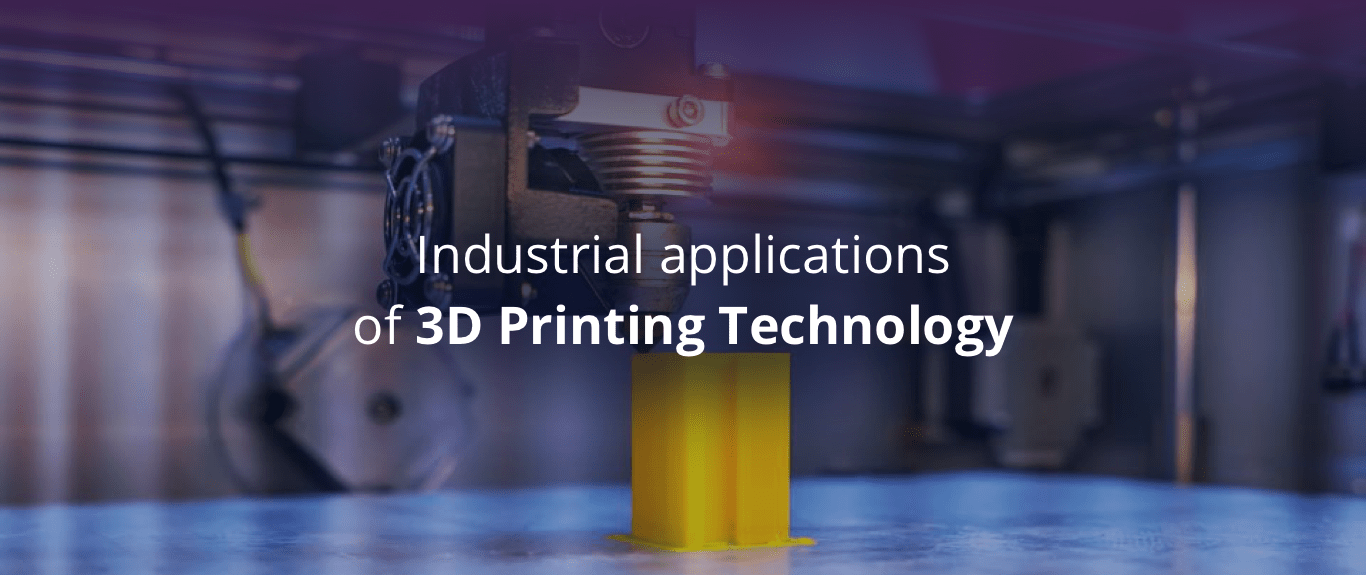Industrial Applications of 3D Printing Technology

Though the 3D printing technology has been around for decades yet it has risen into popularity in the recent times. One of the most common reasons for the recent upswing of this technology is because it is a technology that can be used in applications of all kinds or fields. In the initial years, 3D printers and models used to be expensive. However, in the recent times, with variations and improvements in the nature of the technology of not just the machines but also the materials used in them, costs of this technology have come down making this technology more accessible across industries.
Let us take a look at some of the top industrial applications of 3D printing:
- Education: today, more and more schools are incorporating 3D printing methods in their academic curriculums. The best part about the inclusion of this technology in the education industry is that it allows students to build prototypes without the need to have expensive tools. It gives students the opportunity to learn about this growing technology by producing and designing models that they are actually able to hold. This helps bridge the gap from ideas to images on a single screen or page which allows for the development of those ideas into a physical and three dimensional world. 3D printers are now commonly found in public libraries and classrooms. Universities now make 3D printers available for students to use in their projects. This technology is now revolutionizing STEM education where it offers the ability for low cost and rapid prototyping by students while at the same time, fabricating high quality and low-cost scientific equipment. Students are able to learn about the different dimensions of 3D printing by exploring the principles of engineering, design and architecture. They are now able to replicate museum and rare items like historical artifacts and fossils without causing any damage to the original materials and items. They are also able to gain a new perspective of three dimensions on topographic maps. Graphic design students are now able to easily build models with the help of complex working parts, and truly the range of possibilities to explore this technology in the education industry is endless.
- Aerospace and defense: this industry is regarded one of the earliest adopters of the 3D printing technology. The first use of this technology in this sector is dated back to 1989 and since then, after three decades, this industry contributes to the 16.8 percent of the total 10.4 billion dollar additive manufacturing market and at the same time contributes to the ongoing research within the industry. As we all know, the use of 3D printing technology in aerospace is not just limited to the creation of prototypes but real and functional parts are also being printed in 3D and used in the aircraft. For example, some of the parts that can be produced with 3D printing are wall panels, air ducts and even heavy metal components.
- Automotive: this industry is a growing user of the 3D printing technology. In the last year, i.e., in 2019, the global automotive revenues were estimated to reach to 1.4 billion dollars and this figure is set to increase to 5.8 billion dollars by the end of 2025. In sectors like performance racing and motorsports, different design tools like topology optimization and generative design are gradually transforming the traditional approaches to designing different automotive parts. 3D printing is slowly changing the way in which vehicles are developed today. Whether you are referring to a commercial vehicle or a racing car or a truck, this technology gives designers and engineers the tools to test the design and performance of these vehicles.
- Construction: in this industry, 3D printing is used to create different construction components as well as models of entire projects that help engineers and designers visualize how the models will look before the completion of the entire project. 3D printing technology in the construction industry either can involve a 3D printer attached to an arm that actively develops and builds a project on the site or the use of printers in the factory that can create components of a project that is assembled later. In the construction industry, 3D printing implies remarkably reduced production time. This is because the machines are very fast as some of them are capable of manufacturing as big as a 600 to 800 square feet of building in just 24 hours. Another advantage of this technology in the construction industry is also saving production costs on material waste. This is because a robotics arm exactly uses the amount of material that they need.
These are just a few of the countless ways right from education to construction where the poplar 3D printing technology has impacted our world and lives today.


